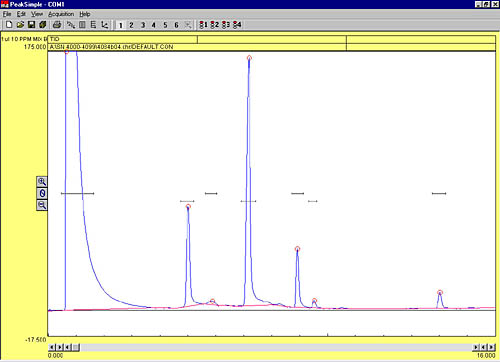|
TID
- Thermionic Ionization Detector
|
53
|
|
 |
The Thermionic Ionization Detector is similar in design to the FID and NPD. The electrically heated thermionic bead (TID bead) is positioned so that the column effluent contacts the hot bead surface. Analyte molecules containing NO2 (nitro) functional groups such as TNT (trinitrotoluene) undergo a catalytic surface chemistry reaction. The resulting ions are attracted to a collector electrode, amplified, then output to the data system.
The TID is extremely selective, having little or no response to most aromatic and aliphatic hydrocarbons. This detector also responds to chlorinated phenols, such as pentachlorophenol (PCP), at slightly less sensitivity.
For optimum sensitivity, the TID requires air for operation. If air is used as the carrier gas, no other detector gases are required. An air makeup gas is provided so that nitrogen or another gas can be used as a carrier. The TID can also be operated in a nitrogen only environment with similar but not identical response characteristics.
 |
This chromatogram shows the separation of a 10ppm explosives sample. |
| The TID is featured on our explosives GC, which was tested by the EPA's Environmental Technologies Verification (ETV) program for measuring explosives in soil. | |
|
Download
the ETV report and verification statement at www.epa.gov/etv/verifications/vcenter1-4.html
Also, download "On-Site Characterization of Explosive Residues in Soils and on Range Scrap Using GC-TID Analysis" by Alan Hewitt of the US Army Corps of Engineers here. |
|
|
8690-0017
|
TID detector
|
£2,728.00
|
|||
|
8670-0017
|
TID bead
|
£368.00
|
|||
|
TID
- Thermionic Ionization Detector
|
53
|